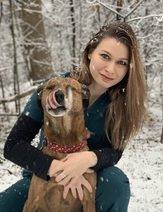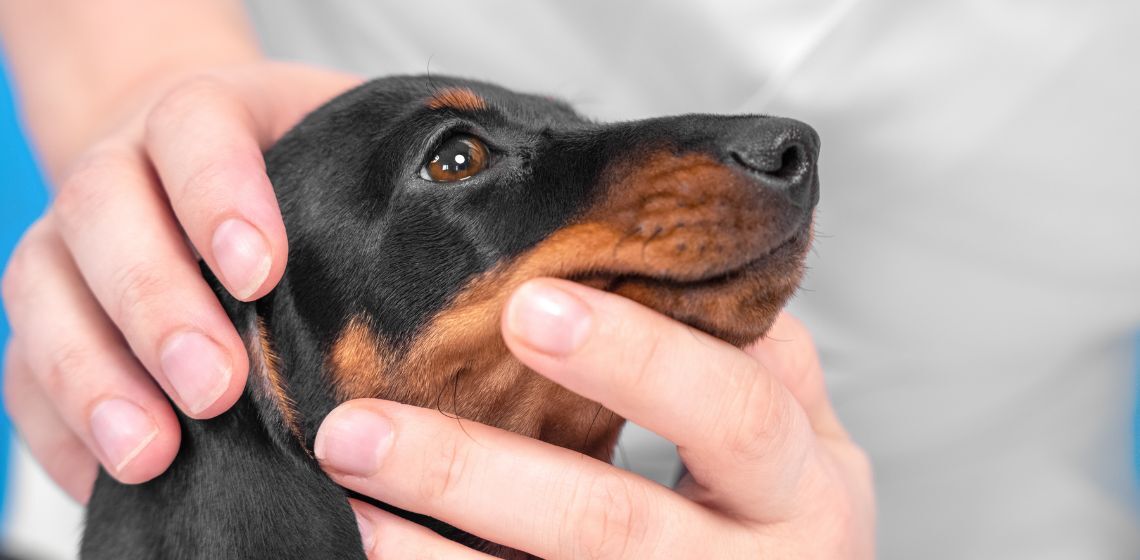Table of Contents
The most common areas where histiocytomas develop are the head, ears, and front limbs. Some masses can develop on the back legs, but this is less typical. The masses are often round and pink in color and can become ulcerated. They are button-like in appearance and move freely in the subcutaneous space.
Concerning size, they often do not exceed 2.5cm in diameter. Typically only one mass will be found. Once the small growth is noted, it may grow rapidly over a few weeks.
Common breeds affected include Boxers, Labrador Retrievers, Staffordshire Terriers, and Dachshunds.
What Causes Histiocytoma in Dogs?
Histiocytomas in dogs are caused by the proliferation of Langerhans cells. These are cells of the immune system found within the skin. The overgrowth of these cells causes a benign tumor to develop.
There is no strong evidence for why these tumors develop in the first place. There is some consideration that insect bites may stimulate the growth of histiocytomas.
Symptoms of Histiocytoma in Dogs
Histiocytomas in dogs rarely cause obvious symptoms such as itching or pain. Most often, they are found incidentally by concerned pet owners.
They can become unsightly, which can be upsetting to the pet owner. This is especially true because over time the mass can become ulcerated and appear red and irritated.
Local lymph nodes can become prominent secondary to an immune reaction to the mass. The mass can become inflamed if your pet begins chewing or licking, which should be discouraged to prevent secondary infection.
How is a Histiocytoma Tumor Diagnosed in Dogs?
Diagnosis of a histiocytoma in dogs is relatively straightforward. They are often diagnosed based on suspicion and classic appearance.
Definitive diagnosis requires a fine needle aspirate of the mass or even an excisional biopsy. A needle is used to poke the mass to collect a few cells to submit to a pathologist. Most histiocytomas do not require biopsy for diagnosis.
What Else Resembles Histiocytoma in Dogs?
Histiocytomas in dogs are generally easy to distinguish based on the history, signalment, and appearance of the mass on the patient. Other tumors can appear similar to histiocytomas which is why further investigation is often warranted.
The most common tumor resembling histiocytoma is a mast cell tumor. These are also tumors that appear suddenly and develop anywhere on the dog’s body.
These tumors consist of mast cells – an immune cell that releases histamines in response to allergic stimuli. These tumors are more likely to be malignant, grow rapidly, and can cause clinical signs such as swelling, irritation, hives, and anaphylactic reactions. Surgery is always recommended to diagnose and stage the tumor.
Plasmacytomas can also have a similar appearance to histiocytomas. These masses are often malignant and occur in older dogs. Male Cocker Spaniels seem more predisposed to these tumors. They require surgical intervention for removal and diagnosis.
Cutaneous lymphoma may also resemble histiocytomas to the naked eye. The differences in these tumors are that they typically develop in older dogs and multiple lesions can appear at the same time. Surgical removal is often required for a definitive diagnosis. Long-term treatment is dictated by pathology findings.
Transmissible venereal tumors are not as common in the United States as they are in other parts of the world. These tumors are found amongst breeding animals and develop as red, raised lesions. They are commonly found on the face or genitals. They can become ulcerated and bleed if traumatized. Surgical removal is recommended, and some tumor types will require chemotherapy to prevent a recurrence.
Given the variety of tumors that can develop in the skin of dogs, a definitive diagnosis with a fine needle aspirate or surgery is always recommended in tumors that appear aggressive or do not resolve within 3 months.
How to Treat Histiocytoma in Dogs?
Most histiocytomas in dogs do not require treatment. These benign masses will regress over 2-3 months as the body naturally eliminates the tumor.
Histiocytomas that are in an area that is easily traumatized or ones that become infected may be removed for patient comfort and to expedite the healing process.
Cryotherapy has also been used if the mass is in a tricky location that is not amendable to surgery, such as near the eye or between the toes.
What is the Prognosis for Dogs with Cutaneous Histiocytomas?
The prognosis for a dog with histiocytomas is excellent. Most will resolve on their own without any medical intervention. If the mass is present for greater than 3 months, surgical intervention is warranted.
Dogs that have the masses surgically removed also have a great prognosis and the site heals quickly with unlikely recurrence.
Recovery of Canine Histiocytoma
Recovery for dogs with histiocytomas is smooth and often most owners will find that the tumors completely heal and resolve within three months.
Dogs that have surgery will have a 2-week recovery time where an Elizabethan collar will need to be worn to prevent licking/chewing the surgical site.
Bathing or grooming is discouraged during this time. Sutures are removed after 14 days and the dog can return to normal activity.
How to Prevent Histiocytomas?
Unfortunately, histiocytomas are not preventable in our canine friends, especially because the inciting cause is not known. Luckily, due to their benign and self-resolving nature, they rarely pose a problem.
Histiocytomas can be a fairly common benign tumor in dogs and can affect 3 in every 1,000 dogs. They are much more common in predisposed breeds such as Boxers, Labrador Retrievers, Staffordshire Terriers, and Dachshunds.
These masses are considered tumors but are not malignant. This means that they will not spread. These tumors also do not act like typical cancers as they are self-resolving and rarely require intervention.
Histiocytomas in dogs are not contagious.

Dr. Paula Simons is an Emergency and Critical Care Veterinary Resident who aspires to be a veterinary criticalist. Dr. Simons is passionate about supporting pets and humans during their times of need. She has a special interest in critical care nutrition, trauma, and pain management. In her free time, she loves plant shopping, hiking, and traveling. She has volunteered in several different countries to help animals in need. She has two cats, Moo and Kal.








